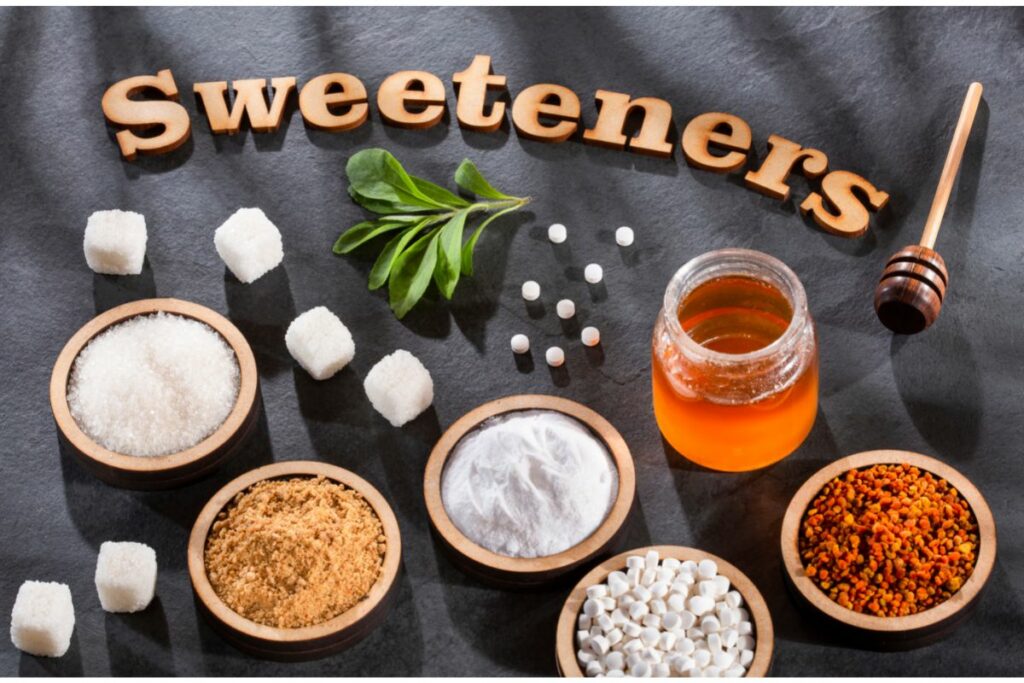You could be on a keto diet to lose weight, or you might want to manage specific conditions, and you find that the diet works in your favor, but when starting on this type of diet, it can be tempting to over-analyze your ingredients and recipes to the point where it becomes frustrating.

You want a diet that is going to be pretty straightforward to follow, and you might not have the time when shopping to check the label of everything you buy, so you might want to start slow and build yourself up to make bigger alterations to your diet.
You can begin with sugars, and you might be wondering if sugar is allowed, even though it’s a no-go for this diet, you might also be wondering what substitutions you will have to make as you progress with your diet.
We’re here to explain what sugars are and aren’t allowed on this diet and what the specific qualities are of each alternative to make your meal prepping much easier. Read on to find out how to make your keto diet successful.
Sugars To Avoid On A Keto Diet
If you want to follow this diet and be in a state of ketosis, which is often achieved by minimizing the number of carbs that you consume, and instead your body burns fat and makes things called ketones.
Any naturally derived sugars or any form of sugar should be avoided for this diet, and this is, unfortunately, the case for coconut sugar as well, as even though it’s natural, the carbs inside are too high to add to a low-carb lifestyle reasonably.
You should also avoid some sweeteners such as Maltodextrin, maple, Agave, dates, and honey, as these can contain a significant amount of cabs even though they are packed with other nutrients.
Sweetener Alternatives You Can Try

While you might be thinking at this point like your options are limited, you can find many sweetener alternatives that can give you a different kind of hint to your flavors, all the while being low-carb, so everyone wins.
Below are examples of sweeteners you can use and what they can bring to your recipes and drinks.
Erythritol
This compound is a type of sugar alcohol that you can use as an additive or a substitute and can be found naturally in some foods you can find this in your local store and even online, and you’ll find that the sweetener mimics the taste of sugar.
When you go out looking for foods that contain this sweetener, make sure to check the label, as these foods could also contain carbohydrates, fats, and a mid to high amount of calories.
You will also find that it doesn’t dissolve as well as sugar does, so this could affect the texture of your recipes and drinks, so you might want to go easy when using it.
Monk Fruit Sweetener
Also known as monk fruit extract, it is taken from the fruit and contains natural sugars and compounds, which act as antioxidants, so you’ll notice straight away that it’s a lot sweeter than regular sugar, and brands mix other natural products to reduce its intensity.
Again you should be wary when buying any kind of monk fruit sweetener, as some can be mixed with sugar, molasses, and other sweeteners that can affect the carb and calorie content.
When using it in your recipes or drinks, it might be best for you to use half of a sweetener, so you can adjust to the taste, and adjust accordingly, so you can still enjoy your diet.
Yacon Root
It might be suggested that the syrup version be avoided as it can contain carbs, and the concentration of syrup means you’re likely to have sugar cravings with the syrup type, that in turn, will make you feel hungrier.
However, the root version of this can fit into a keto diet, you should limit how much you use in your recipes, as it is low in carbs, but it does have some digestible sugars in it, which could cause digestive problems if too much is used.
You might want to consider this one a treat rather than a staple, and you’ll find that it’s a great substitute for maple syrup and molasses.
Xylitol
This sweetener can be considered a great weight-loss sweetener as it contains 40% fewer calories than sugar, and you can find this in sugar-free gum, candy, and mints, and it can be just as sweet as sugar while being keto-friendly.
It can also be easy to add to drinks, smoothies, and recipes, but you might have to include extra liquid in your measurements as the sweetener can cause dryness, so bear this in mind and reduce the amount you use when appropriate.
You should also be strict with your use, as some products it’s found in have the potential to kick you out of ketosis, and too much can cause gastronomical issues.
Sucralose
Another low-carb option, and you can find it in use in foods, drinks, and even some dental products, and is effective as our bodies can no longer digest sucralose properly, so it has zero calories as well.
You’ll find many variations of this sweetener in packets, and it can enrich whatever you use it for and lacks the bitter taste that you may have experienced with other types of sweeteners.
You should be aware that it can be a lot sweeter than sugar and that it’s not suitable to be used in recipes that require baking.
The Bottom Line
While there are many alternative sweeteners out there, you should take care when using them and make sure that you check the label on any packaging, and from here, your keto diet can work wonders for you.
- How To Reheat A Cheesesteak - November 5, 2023
- What Are Three Must Have Kitchen Knives? - September 22, 2023
- How To Protect Edges Of Pie Crust - June 15, 2023








